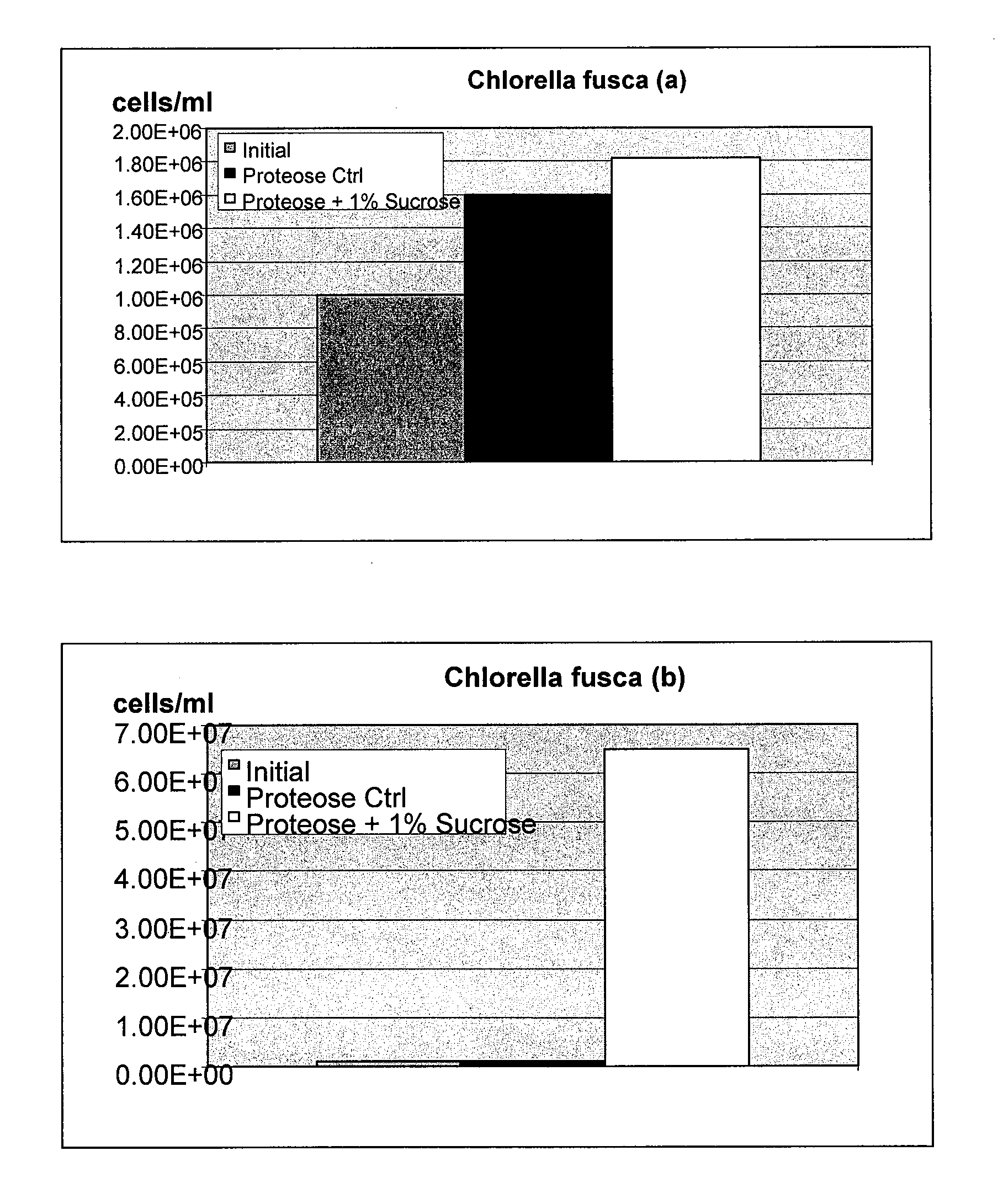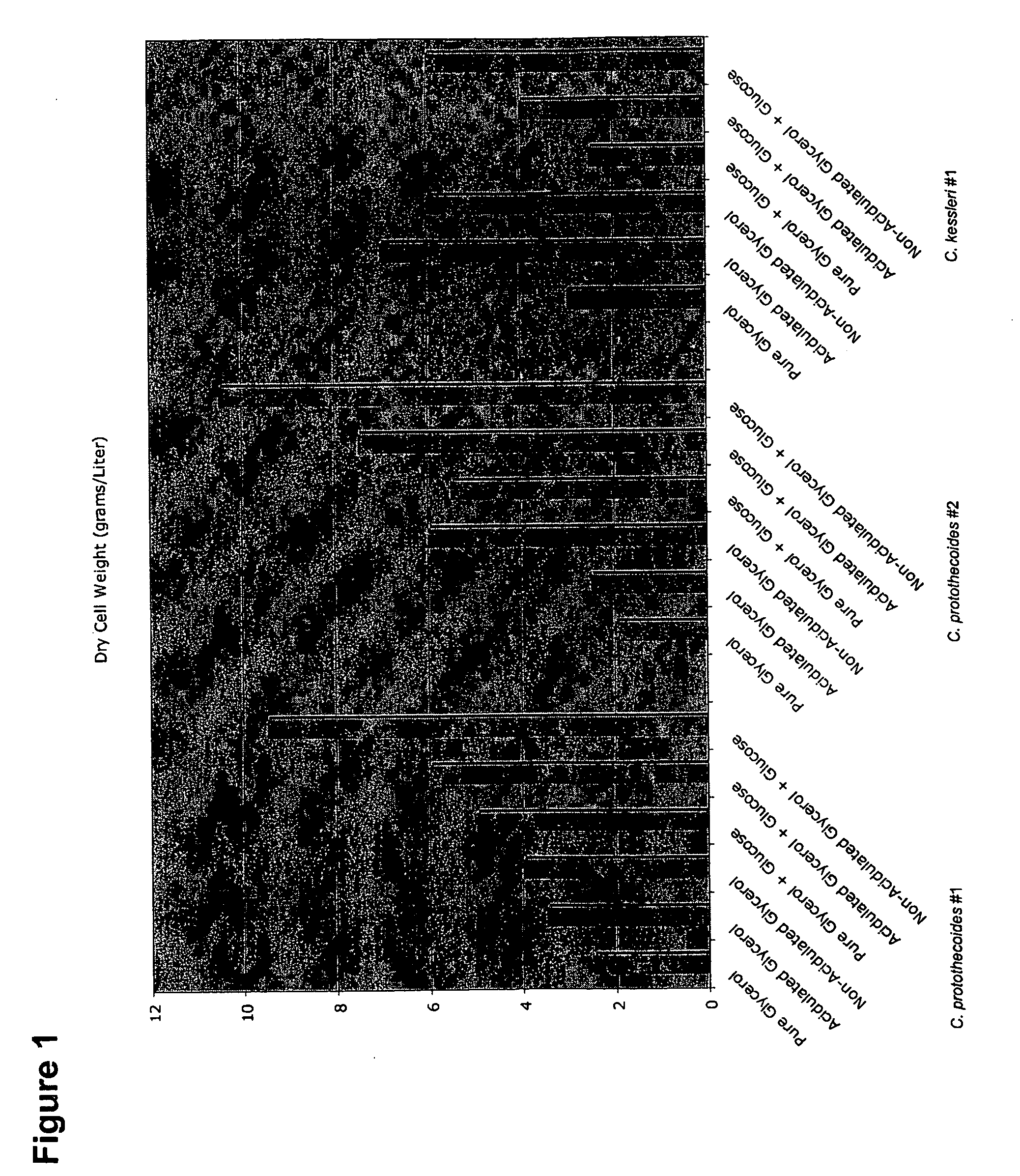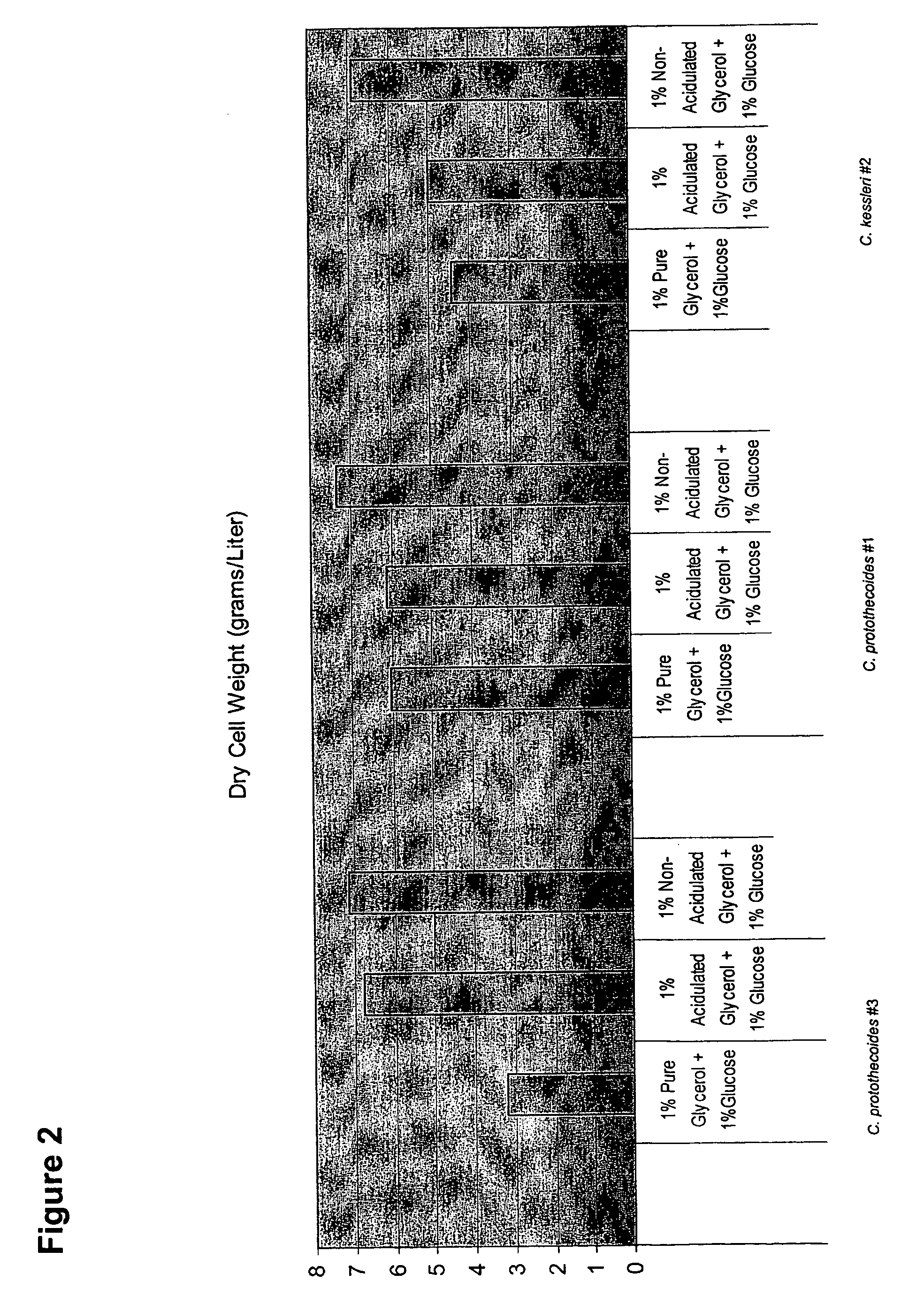Glycerol Feedstock Utilization for Oil-Based Fuel Manufacturing
a technology of glycerol feedstock and oil-based fuel, which is applied in the field of oil-bearing microorganism production, can solve the problems of energy-consuming fossil fuels
- Summary
- Abstract
- Description
- Claims
- Application Information
AI Technical Summary
Benefits of technology
Problems solved by technology
Method used
Image
Examples
example 1
[0468]Chlorella strains from the University of Texas culture collection were tested for growth on glycerol and glucose. The following Chlorella species and strains were cultured: Chlorella kessleri (strains 263, 397, 398, 2228); Chlorella sorokiniana (strains 1663, 1665, 1669, 1671, 1810); Chlorella saccharophila (2911; 2469); Chlorella protothecoides (31, 249, 250, 264). Each strain was inoculated from solid media into 25 ml liquid base media (2 g / L yeast extract, 2.94 mM NaNO3, 0.17 mM CaCl2.2H2O, 0.3 mM MgSO4.7H2O, 0.4 mM K2HPO4, 1.28 mM KH2PO4, 0.43 mM NaCl) and grown shaking at 27° C. for 72 hours under a light intensity of 75 μEm−2s−1. These cultures were used to inoculate each strain to a final density of 1×105 cells per ml into 24-well plates containing 2 ml of (a) base media only; (b) base media plus 0.1% glucose; and (c) base media plus 0.5% reagent grade glycerol (EM Science, catalog #GX0185-6). Plates were placed in the dark and grown for 72 hours shaking at 27° C. Sampl...
example 2
[0469]Strains and Media: Chlorella protothecoides #1 (STRAIN 250), #2 (STRAIN 264) and Chlorella kessleri #1 (STRAIN 398) were obtained from the Culture Collection of Algae at the University of Texas (Austin, Tex., USA). The stock cultures were maintained on modified Proteose medium. Modified Proteose medium consisted (g / L) of 0.25 g NaNO3, 0.09 g K2HPO4, 0.175 g KH2PO4 0.025 g, 0.025 g CaCl2.2H2O, 0.075 g MgSO4.7H2O, and 2 g yeast extract per liter. Glycerol wastes from biodiesel production (acidulated glycerol (AG) and non-acidulated glycerol (NAG)) were obtained from Imperial Western Products (Selma, Calif., USA). “Pure” or “reagent grade” glycerol was from EM Science (a division of Merck KGA), catalog #GX0185-6.
[0470]Experimental design and Growth Measurement: For each strain, 1 ml of following different media was prepared in 24-well plates.
[0471]1. Proteose+1% pure glycerol
[0472]2. Proteose+1% acidulated glycerol
[0473]3. Proteose+1% non-acidulated glycerol
[0474]4. Proteose+1% p...
example 3
[0478]Strains and Media: Chlorella protothecoides #1 (STRAIN 250), #3 (STRAIN 249) and Chlorella kessleri #2 (strain 397) were obtained from the Culture Collection of Algae at the University of Texas (Austin, Tex., USA). The stock cultures were maintained on modified Proteose medium (see EXAMPLE 2).
[0479]Experimental design and Growth Measurement: For each strain, 1 ml of following different media was prepared in 24-well plates.
[0480]1. Proteose+1% pure glycerol+1% glucose
[0481]2. Proteose+1% acidulated glycerol+1% glucose
[0482]3. Proteose+1% non-acidulated glycerol+1% glucose
[0483]Each strain was inoculated to different media to 5×105 cells / ml concentration. The cultures were kept in dark and agitated by orbital shaker from Labnet (Berkshire, UK) at 430 rpm. After 96 hr, cell growth was measured for dry cell weight (see EXAMPLE 2). Results are shown in FIG. 2.
PUM
| Property | Measurement | Unit |
|---|---|---|
| Time | aaaaa | aaaaa |
| Ratio | aaaaa | aaaaa |
| Energy | aaaaa | aaaaa |
Abstract
Description
Claims
Application Information
 Login to View More
Login to View More - R&D
- Intellectual Property
- Life Sciences
- Materials
- Tech Scout
- Unparalleled Data Quality
- Higher Quality Content
- 60% Fewer Hallucinations
Browse by: Latest US Patents, China's latest patents, Technical Efficacy Thesaurus, Application Domain, Technology Topic, Popular Technical Reports.
© 2025 PatSnap. All rights reserved.Legal|Privacy policy|Modern Slavery Act Transparency Statement|Sitemap|About US| Contact US: help@patsnap.com



